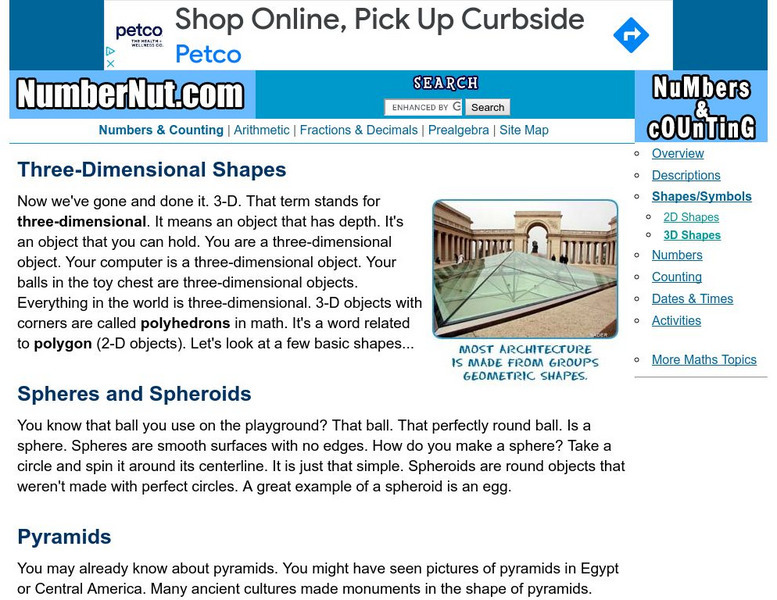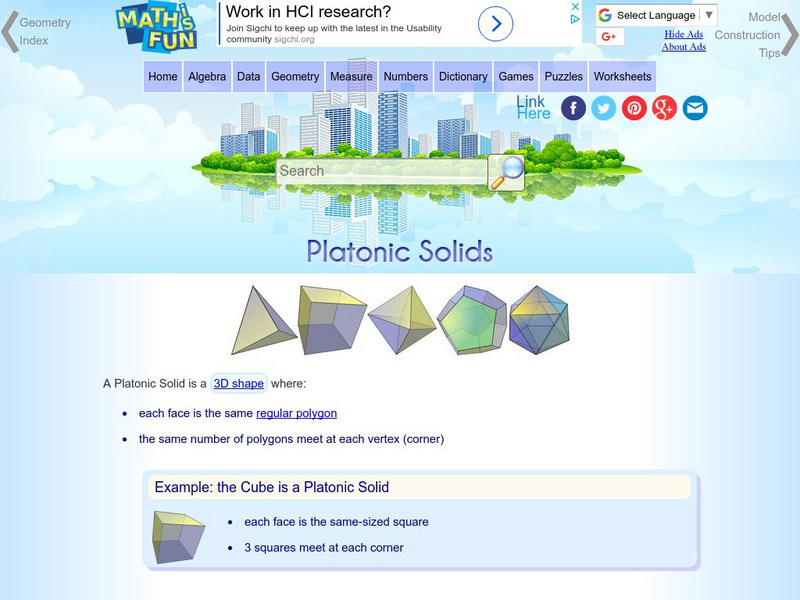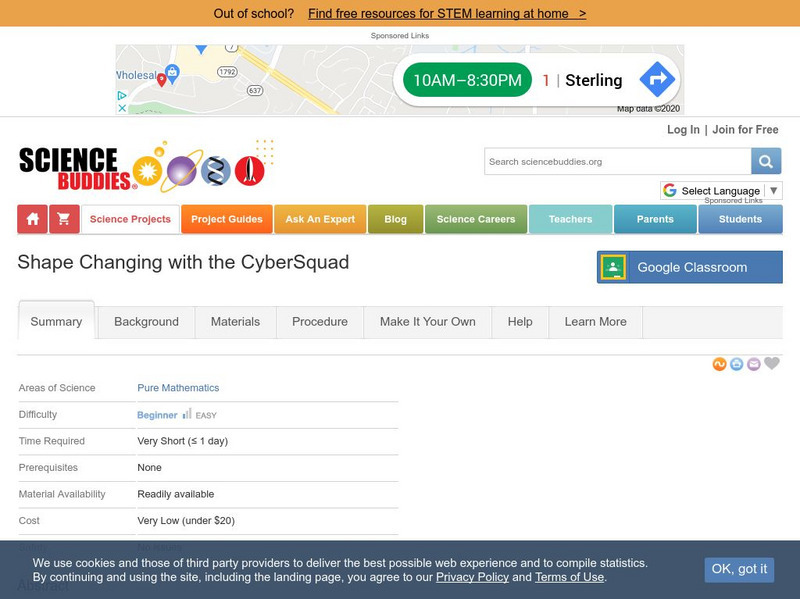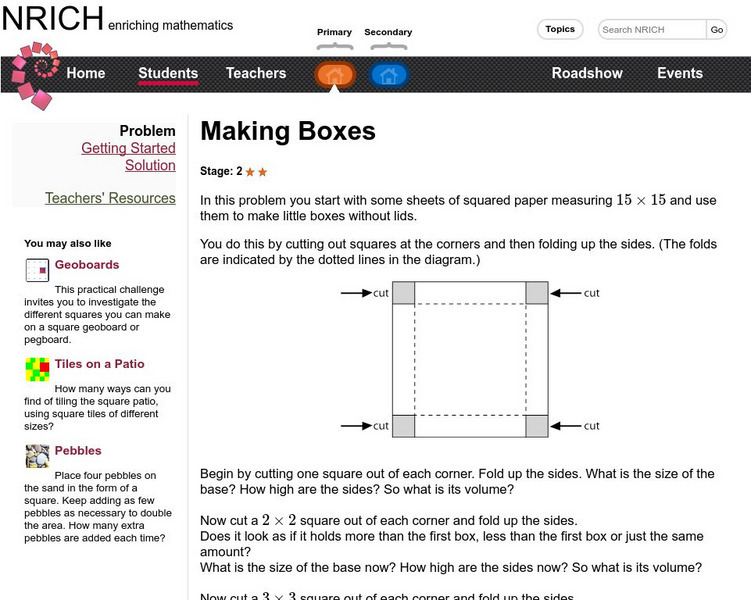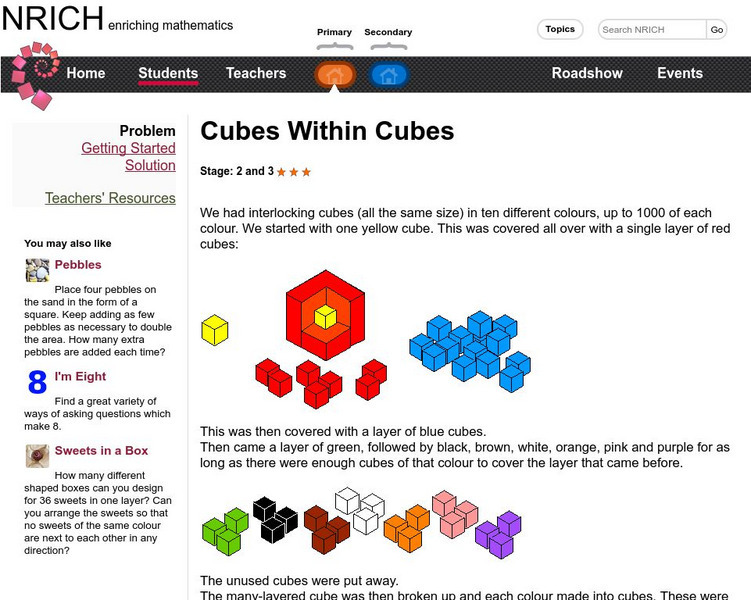PBS
Pbs Kids Afterschool Adventure!: Operation: Shape It Up Activity Plan
Get your spy glasses ready! In this weeklong adventure, children will explore shapes and their attributes and use this knowledge to decode a secret message. Children will learn about two-dimensional (flat) and three-dimensional (solid)...
PBS
Pbs Learning Media: Making Rock Candy
In this video segment from Cyberchase, two friends make rock candy while learning about 2-D and 3-D shapes.
NumberNut
Number Nut: Shapes, Symbols and Colors: Three Dimensional Shapes
Describes the basic three-dimensional figures students will encounter in elementary Math and in the world around them, and makes mention of a few unusual ones.
Alabama Learning Exchange
Alex: Guess My Shape
The students will make the connection between 2-D and 3-D shapes using modeling clay and geometric solids and participate in an interactive web activity. Students will make predictions about what 2-D shape they think will be made when...
Math Is Fun
Math Is Fun: Making 3 D Solids
This tutorial features templates and instructions to make the following solids: tetrahedron, cube, octahedron, dodecahedron, and icosahedron.
Science Buddies
Science Buddies: Shape Changing With the Cyber Squad
In this project, you will make 2-dimensional templates, called nets, that fold up into 3-dimensional (3-D) shapes. By making shapes of different sizes, you will be able to see how 3-D shapes change with size. In your findings you will...
Texas Instruments
Texas Instruments: Copying an Angle
Explore relationships (including congruence and similarity) among classes of two- and three-dimensional geometric objects, make and test conjectures about them, and solve problems involving them.
Annenberg Foundation
Annenberg Learner: Geometry 3 D Shapes: Platonic Solids
Learn about platonic solids, a special type of polyhedra. Read a definition, make three-dimensional models using printouts, and play with an interactive animation, which will show you the faces, vertices, and edges on platonic solids:...
University of Cambridge
University of Cambridge: Nrich: Three Cubed
Use the shapes provided and figure out how they fit together to make a 3 X 3 cube at this one page website. The solution is readily available right at the website.
National Council of Teachers of Mathematics
Nctm: Illuminations: Volume of a Cube
"The volume of a cube can be developed by considering unit cubes, a single row (longs) of unit cubes or a single layer (flats) of cubes using this applet." This easy software makes it possible to easily construct a cube and take it...
University of Cambridge
University of Cambridge: Nrich: Making Boxes
Have fun and learn by making a box and then find out its maximum volume as well as other problem-solving activities, including making a table of your results and drawing a graph.
University of Cambridge
University of Cambridge: Nrich: Making Cuboids
How many different cuboids can you make? Learn how and learn how to represent data with your results.
University of Cambridge
University of Cambridge: Nrich: Cubes Within Cubes
On this one page website sharpen your logic, geometry, spatial thinking, and problem solving skills while working on this challenge. The solution is available to double check your solution.
Science Education Resource Center at Carleton College
Serc: Mn Step: Surface Tension With Soap Film
An investigation into the effect soap has on the surface tension of water. Learners create three-dimensional shapes using toothpicks and clay, dip them into soapy water, and make observations and formulate questions about the soap film.

